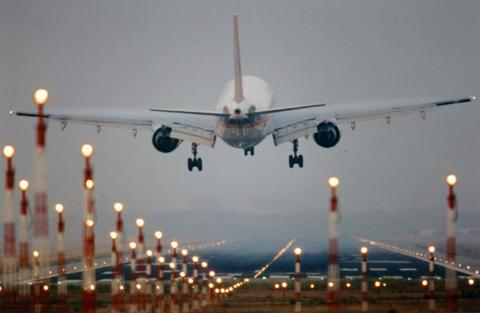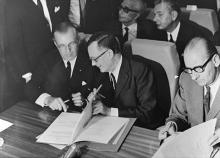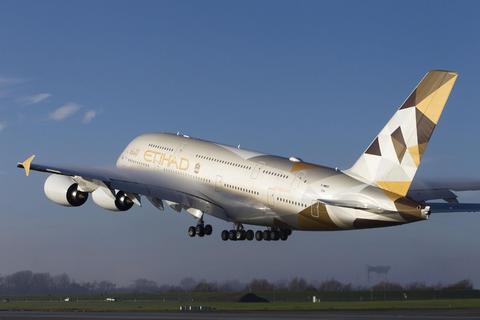Airbus carried its high level of programme and commercial activity into 2013 – sustaining the momentum from last year by achieving new milestones that include the A350 XWB jetliner’s first flight, a further ramp-up in A330 production and the 10,000th A320 Family order, as well as important deliveries of: the first A400M, 1,000th A330, 100th A380, and Airbus’ 8,000th total aircraft.
2013 also confirmed Airbus market leadership as the company received 1,619 gross aircraft orders and 1,503 net bookings – both industry records in terms of units and value.
This maintained the momentum of 2012 – during which Airbus outperformed on its internal business goal by winning 914 gross orders for the company’s jetliners (which was 40% above the internal target), and reaching a record number of annual new deliveries by providing 588 aircraft to customers during the year.
Building off 2012, and as a result of the success in 2013, Airbus’ industry-record backlog totaled more than 5,500 aircraft by year’s end.
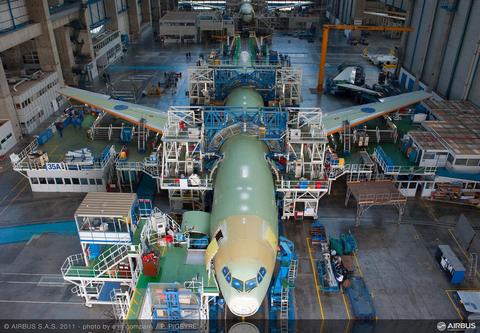
Airbus’ A330 production rate reached an all-time high of 10 per month in 2013.
A350 XWB: The new shape of efficiency takes flight
The test and certification programme for Airbus’ newest and most efficient jetliner – the A350 XWB – kicked into full gear in 2013.
On 14 June, the first aircraft to fly – designated MSN1 in Airbus’ numbering system – conducted its highly successful maiden flight from Toulouse-Blagnac Airport. One week later, this jetliner had a brief starring role at the Paris Air Show, performing a high-profile flyby over Le Bourget Airport during its third test flight.
MSN3 joined the flight test campaign in October, with its successful first mission, which lasted approximately five hours. Like MSN1, the second of this next-generation wide-body to fly is an A350-900 version, which is equipped with heavy flight test installation. A total of five development aircraft will participate in the 2,500-flight-hour test and certification effort for this version, which will lead to an entry into airline service in the second half of 2014 with Qatar Airways as its first operator.
As the testing and certification programme continues, the A350 XWB continues to receive strong endorsements from some of the world’s leading flag carriers. In September, Lufthansa ordered 25 A350-900s, with further option for 30 more, along with the flexibility to convert some aircraft to the larger A350-1000s; meanwhile, British Airways contracted in the same month for 18 A350 XWB, a choice announced earlier in the year by the U.K. operator and its International Airline Group parent company. Japan Airlines became the nation’s first A350 XWB customer with its firm purchase order for 31 aircraft, covering A350-900 and A350-1000 variants.
Through 2013, Airbus’ A350 XWB had logged more than 800 firm orders from 39 customers worldwide. With the use of advanced materials – including lighter-weight carbon-fibre composites – and highly efficient Rolls-Royce Trent XWB engines, the jetliner family will introduce a step change in efficiency when compared with existing aircraft in its size category, along with reductions in CO2 emissions.
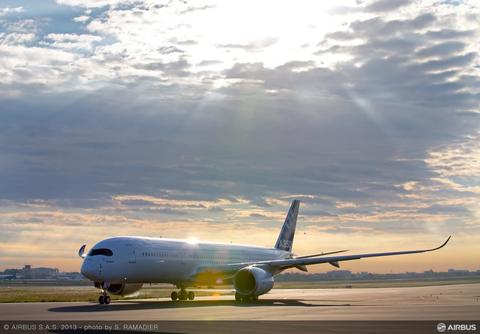
The no.2 A350 XWB to fly completed its maiden flight on 14 October.
The enduring A330 success story
The A330 maintained its popularity with airline customers and lessors around the world, highlighted by Airbus’ milestone 1,000th delivery of an A330 Family aircraft, which was accepted by Cathay Pacific Airways in July.
The popularity of this wide-body family also was reflected in Airbus’ new record output of 10 per month, which was reached earlier in 2013.
Current production includes the A330-200 and A330-300 passenger versions, the A330-200F freighter, and the military Multi Role Tanker Transport – which is based on the A330-200 airframe, equipped for aerial refueling missions along with troop and cargo airlift.
As of the 1,000th delivery in July, the aircraft type already had carried some 1.2 billion passengers during its operational career, with a takeoff or landing performed by the twin-engine jetliner somewhere in the world every 23 seconds.
In new business transactions, the A330-200F received an important vote of confidence from Qatar Airways, which placed a firm order for five more freighters. Announced at the 2013 Dubai Airshow in November, these additional aircraft will join the Gulf carrier’s three A330-200Fs already in service – and positions the Airbus mid-sized freighter to become the backbone of Qatar Airways’ cargo fleet.
A month later, Air Asia X signed for an additional 25 A330-300s to bolster its fleet, marking the largest A330 Family order received by Airbus in a single purchase agreement.
Airbus is keeping the A330 Family of aircraft highly competitive by investing in its continual evolution. During the 2003-2013 timeframe, Airbus committed one euro to improve the programme for every euro originally spent developing it, ensuring the latest technology is on board the A330. This ongoing “success story” is further bolstered by the increased 242 metric tonne maximum takeoff weight variant – launched by the company in 2012 – which will extend the jetliners’ range by some 50% when compared to its original service entry.
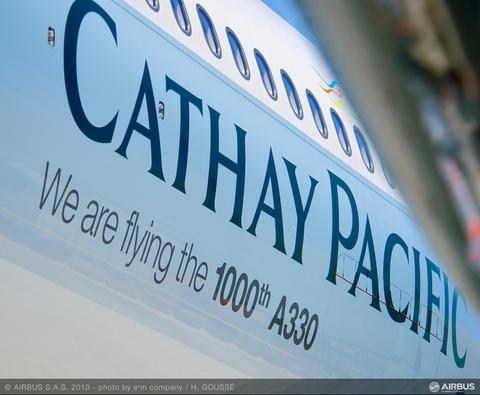
In July, Airbus delivered its milestone 1,000th A330 aircraft – received by Cathay Pacific Airways, which displays the message, “We are flying the 1000th A330” on the jetliner’s fuselage.
The A400M is accepted for military service
Another highlight on Airbus’ 2013 calendar was the first delivery of the Airbus Military-built A400M military airlifter – which provides a cost-effective, high-speed aircraft designed to meet the harmonised needs of European NATO nations, as well as the requirements of international air forces.
The A400M programme achieved this key milestone during August with the formal delivery to the French Air Force.
This step followed the aircraft’s military standard acceptance in late July by the Organisation for Joint Armament Cooperation (OCCAR), representing the programme’s seven European launch nations: Belgium, France, Germany, Luxembourg, Spain, Turkey and the United Kingdom.
Earlier in the year, the airlifter received full civil Type Certification, making it the world’s first large military transport to meet both civil and military standards.
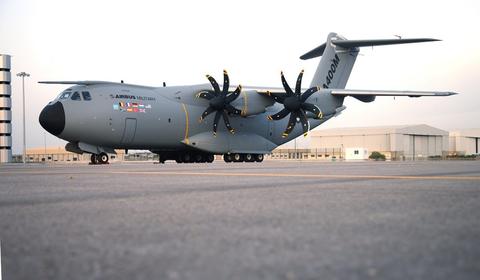
The A400M’s military standard acceptance by the Organisation for Joint Armament Cooperation (OCCAR) was followed by Airbus’ first delivery, with the initial airlifter received by the French Air Force.
A380 hits the “century mark”
The handover of a new A380 to Malaysia Airlines in March represented a new achievement for Airbus’ 21st century flagship jetliner: the 100th delivery to international operators.
This landmark delivery underscored Airbus’ continued global reach with the A380, which demonstrates daily the capability to increase capacity, enhance productivity, generate more revenue and improve profit for its operating airlines.
In another important milestone this year, the A380 expanded its global operator base as Airbus delivered British Airways no. 1 aircraft in July, which was followed by two more A380 deliveries to the British carrier in 2013.
Two strong endorsements also were received during the year: the first from one of the world’s largest wide-body lessors, and the other from Airbus’ largest customer for the A380. At the 2013 Paris Air Show, the Dublin, Ireland-based Doric Lease Corp. signed a Memorandum of Understanding for 20 of these double-deck aircraft, which will expand this 21st century flagship jetliner’s profile in the lease market – making the A380 more accessible to new and existing customers with the flexibility of an operating lease.
Several months later, Emirates Airline signed a contract at the Dubai Airshow for 50 more A380s, providing additional jetliners to expand its route coverage and for aircraft replacement. This latest reorder brings the total number of A380s booked by the Dubai-based carrier to 140.
With the aircraft in its sixth year of service for worldwide operators, the global fleet of A380s undertakes more than 150 commercial flights per day and carries more than 1.5 million passengers each month as of December 2013.
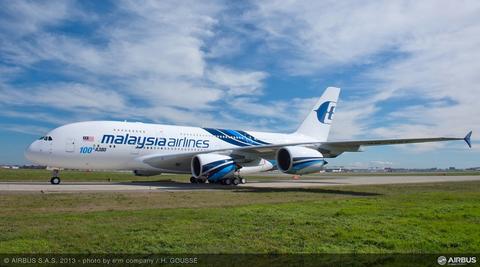
Airbus’ A380 programme marked a major achievement with delivery of the 100th double-deck jetliner, which was received by Malaysia Airlines on 14 March 2013.
Supporting the global customer base
With more than 7,600 aircraft in operation for its worldwide customer base, Airbus remained committed to growing the company’s portfolio of support and services that help operators keep these jetliners flying safely and profitably.
Included in these offerings is Airbus’ Flight Hour Services (FHS) programme, a cost-effective maintenance outsourcing option to secure aircraft technical performance with minimal risk and investment – delivering modular solutions that range from material supply and repair to full maintenance.
In addition to the more than 100 A330, A340 and A380 family jetliners covered by Airbus Flight Hour Services, the FHS solution was extended to Airbus’ best-selling A320 Family in January 2013 with a 15-year Tailored Support Package contract inked with Thai Airways International (THAI), in support of its THAI Smile subsidiary.
The A320 Family moves forward
Airbus’ A320 Family continued its momentum in 2013, as the total backlog for the single-aisle family reached nearly 4,300 aircraft – including orders for 2,610 new engine option (NEO) variants.
Also during 2013, an increasing number of airlines took delivery of their first A320s equipped with Airbus’ fuel-saving Sharklets as the company continues to expand the application for these wingtip devices. By October, some 180 aircraft with these devices have been delivered, including the initial A319 and A321 variants featuring Sharklets to American Airlines, and Finnair, respectively.
In October, Airbus announced the launch of its Sharklets retrofit programme for in-service A320 Family aircraft. The retrofit – initially for A319s and A320s – offers operators the cost-saving and performance-enhancing benefits of these devices, while extending aircraft service life. As of the announcement, Airbus had received airline commitments for around 200 shipsets, including from JetBlue.
To meet the growing worldwide demand for these devices, Sharklets production went global as Airbus’ Final Assembly Line China delivered its first A320 featuring the fuel-saving devices to China Eastern Airlines in May. Through the first half of 2013, some 50 per cent of all A320s delivered by Airbus utilise Sharklets, and Airbus handed over more than 20 single-aisle aircraft with these devices in June alone.
The NEO programme also progressed toward its future service entry, as Airbus froze design on its A320neo and A319neo variants and production of components and subassemblies commenced for the first aircraft to fly. This highly-efficient aircraft family, providing two new engine choices along with standard Sharklets, will deliver a 15% fuel burn reduction to carriers and is planned to enter service from 2015.
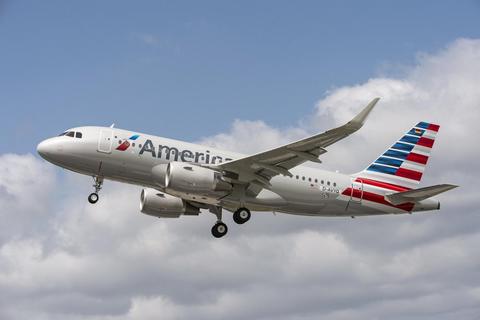
American Airlines received its first A320 Family jetliner in July.
10,000th A320 Family aircraft ordered
In October, JetBlue agreed to 35 new A320 jetliners – covering both current (CEO) and new engine option (NEO) variants – marking Airbus’ historic 10,000th order for this single-aisle product line.
The deal covered 15 A321ceo and 20 A321neo jetliners to reach the 10,000 milestone, in addition to JetBlue’s option to upsize 8 A320ceo and 10 A320neo aircraft on backlog to their respective A321 variants and the announcement of Airbus’ Sharklet retrofit programme.
On top of the popular CEO versions, the NEO offerings have played a significant role in Airbus’ A320 Family reaching the 10,000 order mark, with more than 2,600 aircraft sold since the programme’s launch in December 2010.
An expanding American presence
Airbus underscored its commitment to serving the United States marketplace – one of largest for single-aisle aircraft in the world – with the “game-changing” April groundbreaking for the company’s first U.S.-based A320 Family final assembly line at Brookley Aeroplex in Mobile, Alabama. It will be the fourth worldwide final assembly line for the best-selling single-aisle product line and is a significant step in Airbus’ global growth – in both the U.S. and Europe.
The facility marked a key milestone in September, when the first steel column was raised into a vertical position. This step followed the completion of ground work at the Brookley Aeroplex site.
With A320 Family aircraft assembly in Alabama scheduled to begin in 2015, the facility’s first delivery is planned for 2016 to JetBlue – the U.S.-based carrier which operates a fleet of more than 100 Airbus single-aisle jetliners.
At full production, the $600 million facility will create as many as 1,000 highly-skilled jobs at the assembly line and at associated facilities. In addition, the U.S. is the largest single supplier to Airbus, making Airbus the largest export customer for the American aerospace industry.
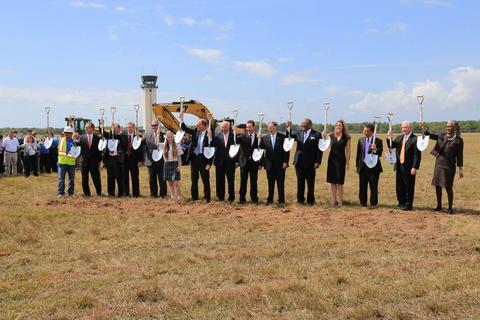
Construction of Airbus’ U.S. A320 Family final assembly line in Mobile, Alabama officially began with the groundbreaking ceremony held 8 April.
8,000th delivery
As a sign of Airbus continued market leadership, the company handed over its 8,000th aircraft in August – a Sharklet-equipped A320 received by AirAsia.
The landmark delivery highlighted the continued strong demand for Airbus’ highly efficient modern product line.
The company reached the 8,000th handover less than two years after its 7,000th delivery, continuing its trend of achieving each successive 1,000 milestone faster than the previous.
In addition to the more than 5,600 A320 Family jetliners Airbus has supplied to its global customer and operator base in reaching this milestone, the company also provided 816 A300/A310 aircraft during a successfully completed production run, 1,300-plus A330 and A340 wide-bodies, and over 100 A380 double-deck jetliners.
This global fleet had carried more than 10 billion passengers serving nearly 500 customers and operators as of the 8,000th handover.
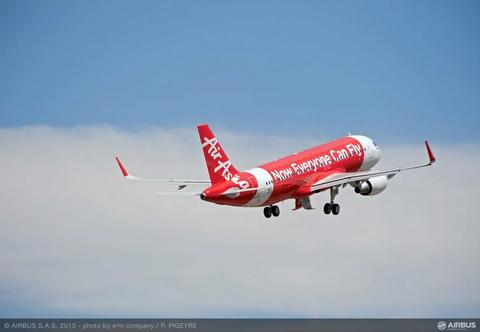
Milestone agreement in Japan
Airbus’ presence in Japan has continued to grow in recent years, and the company took a major step forward with a landmark purchase agreement from Japan Airlines for 31 A350 XWB, announced in October.
The deal covered both the benchmark A350-900 and longer-fuselage A350-1000 variants, and marked the first direct Airbus order from Japan’s flag carrier, which became the initial customer for the A350 XWB in the country.
Japanese customers have booked orders for the entire family of Airbus’ modern, efficient aircraft – from the A330 and A350 XWB wide-body families to the single-aisle A320 and flagship A380 jetliners – as the number of Airbus aircraft operating in the country is scheduled to double in the next five years. The A320 Family has become particularly popular with Japan’s emerging low-cost carriers, highlighted by March’s delivery of the 100th aircraft for Japan, an A320 for operator Jetstar Japan.
Regional activity is coordinated through the Airbus Japan subsidiary, and the company also has developed strong industrial partnerships for its current production aircraft, as well as research and technology cooperation with the country, which draw on Japanese skills, reliability, technological leadership and quality standards.
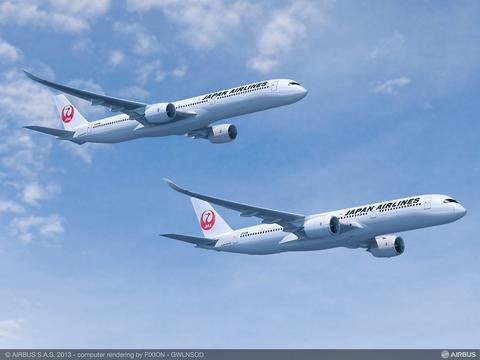
Japan Airlines became the first Japanese carrier to acquire Airbus’ A350 XWB with a purchase agreement for 31 aircraft.
A landmark handover in China
December’s delivery of an A320 to Air China marked the 1,000th Airbus aircraft in service for Chinese operators and underscored the company’s growing presence in this Asian nation, which is becoming one of the world’s largest aviation markets.
Chinese customers receive 20% of Airbus global aircraft production at the time of this milestone.
As a result, the fleet of Airbus-produced jetliners operating in China has expanded by 50 times during the period from 1995-2013, and covers a wide range of the company’s airliners: from its cornerstone A300/A310 and single-aisle A320 product lines, to the A330 wide-body family and the 21st century flagship A380.
Airbus also has an increasing number of manufacturing and support operations in China, including the Tianjin A320 Family final assembly line, which was the company’s first such facility outside of Europe.
The site has delivered more than 125 aircraft thru mid-2013, including its initial Sharklet-equipped A320, which was received by China Eastern Airlines in May.
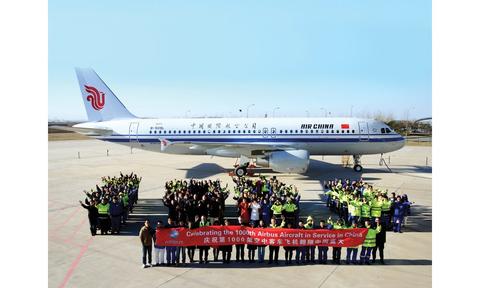
The in-service Airbus fleet with Chinese operators eclipsed 1,000 aircraft following December’s delivery of an A320 to Air China.

